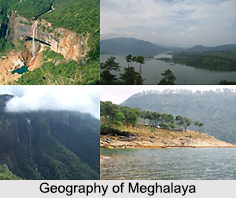 Anamudi Peak is the highest peak in the Western Ghats situated at a height of 2,695 m above mean sea level and a topographic prominence of 2, 479 metres. This peak is also known by names like Anamudi or Anaimudi, which literally means the "elephant`s forehead". The meaning refers to the resemblance of the mountain to an elephant`s head. Anamudi Peak, which is the pride of Kerala, attracts tourists throughout the year.
Anamudi Peak is the highest peak in the Western Ghats situated at a height of 2,695 m above mean sea level and a topographic prominence of 2, 479 metres. This peak is also known by names like Anamudi or Anaimudi, which literally means the "elephant`s forehead". The meaning refers to the resemblance of the mountain to an elephant`s head. Anamudi Peak, which is the pride of Kerala, attracts tourists throughout the year.
Location of Anamudi Peak
It is located in the southern part of Eravikulam National Park at the joint of Cardamom Hills, the Anaimalai Hills and the Palni Hills. The Anamudi Peak is known to be the highest peak in South India and also the highest point in the southern Himalayas. The Anamudi Peak is located in the Idukki district of the state of Kerala. It is 50 km from the nearest town of Munnar and 130 km from Kochi.
Climbing History of Anamudi Peak
According to some, the Anamudi Peak was first scaled by General Douglas Hamilton of the Madras Army on May 4th in the year 1862. While there are other theories suggesting otherwise.
Attractions of Anamudi Peak
The Anamudi Peak is surrounded by evergreen forests. It inhabits widespread flora and fauna and a vibrant avian life. The lush green forest is also the source of some of the large rivers in Kerala and the nearby Tamil Nadu state.
The Eravikulam National Park, to the north of the Anamudi Peak is a major attraction. It is also the ideal place for wildlife travellers and nature lovers. Anamudi, together with the Eravikulam Park, houses one of the largest surviving populations of gaurs, Asian elephants and the Nilgiri Tahrs.
The hills are ideal places for trekking and camping. The peak can be easily accessed by hiking on the grass slopes. It starts from a rolling hill plateau with a base elevation of about 2,000 m. The east and west slopes are steeper with more difficult rock faces. However, the north and south slopes are considerably tender.
Visiting Information on Anamudi Peak
The ideal time to visit the Anamudi Peak is from the months of September to May. Eravikulam is the closest Transport Terminal which is 15 km from Munnar. The nearest railway stations are Kottayam and Ernakulam which are about 142 km and 130 km away from Munnar respectively. The closest Airports are Madurai and Cochin International Airport is about 142 km and 150 km away from Munnar respectively.















